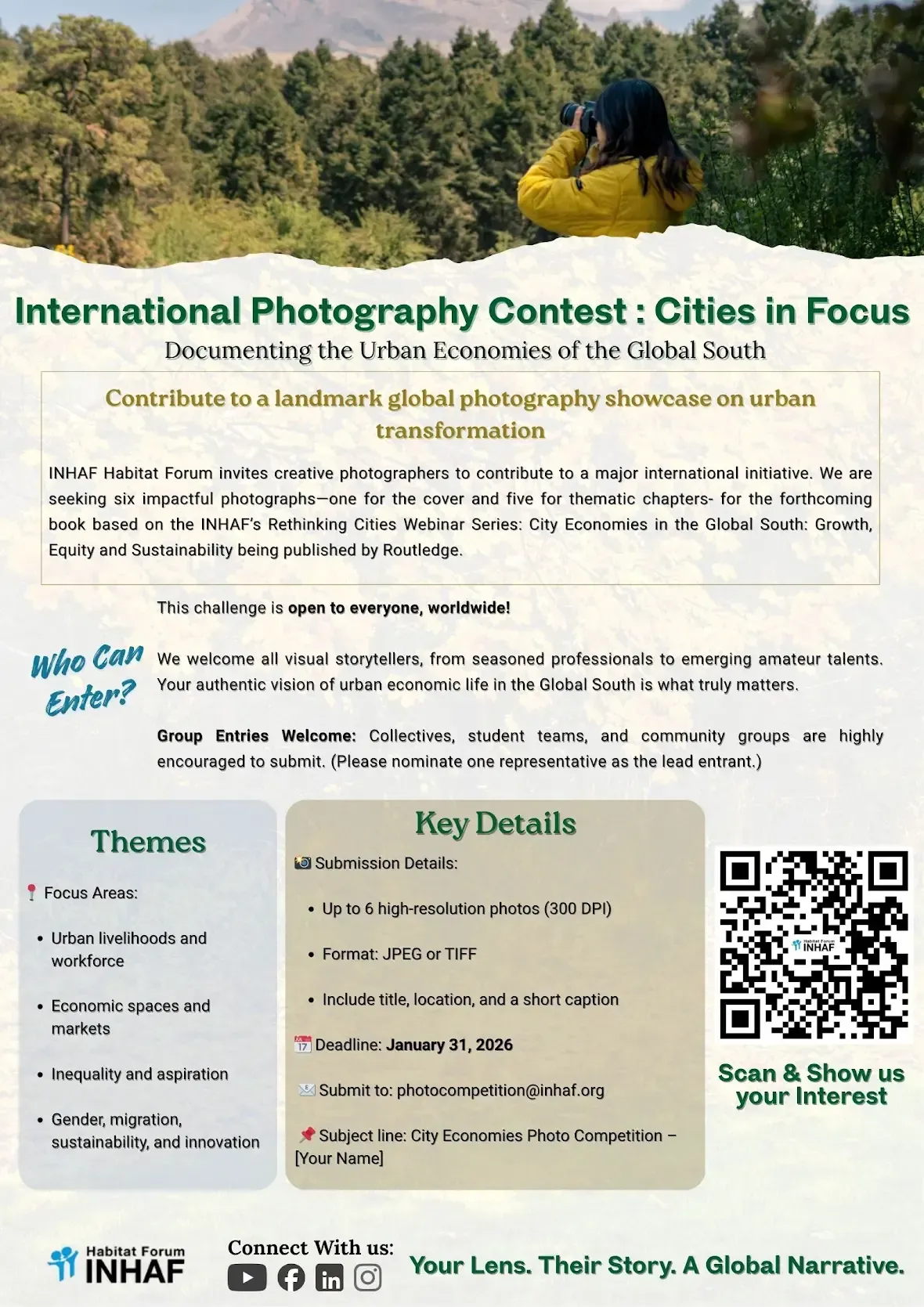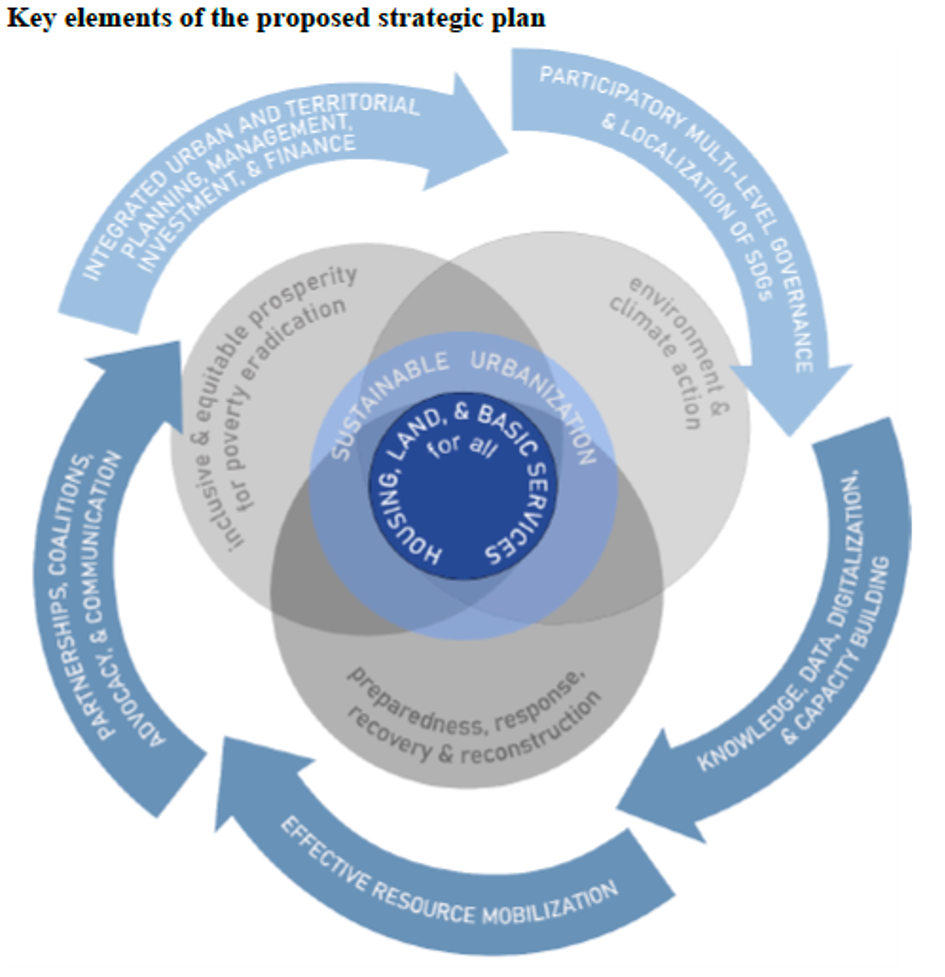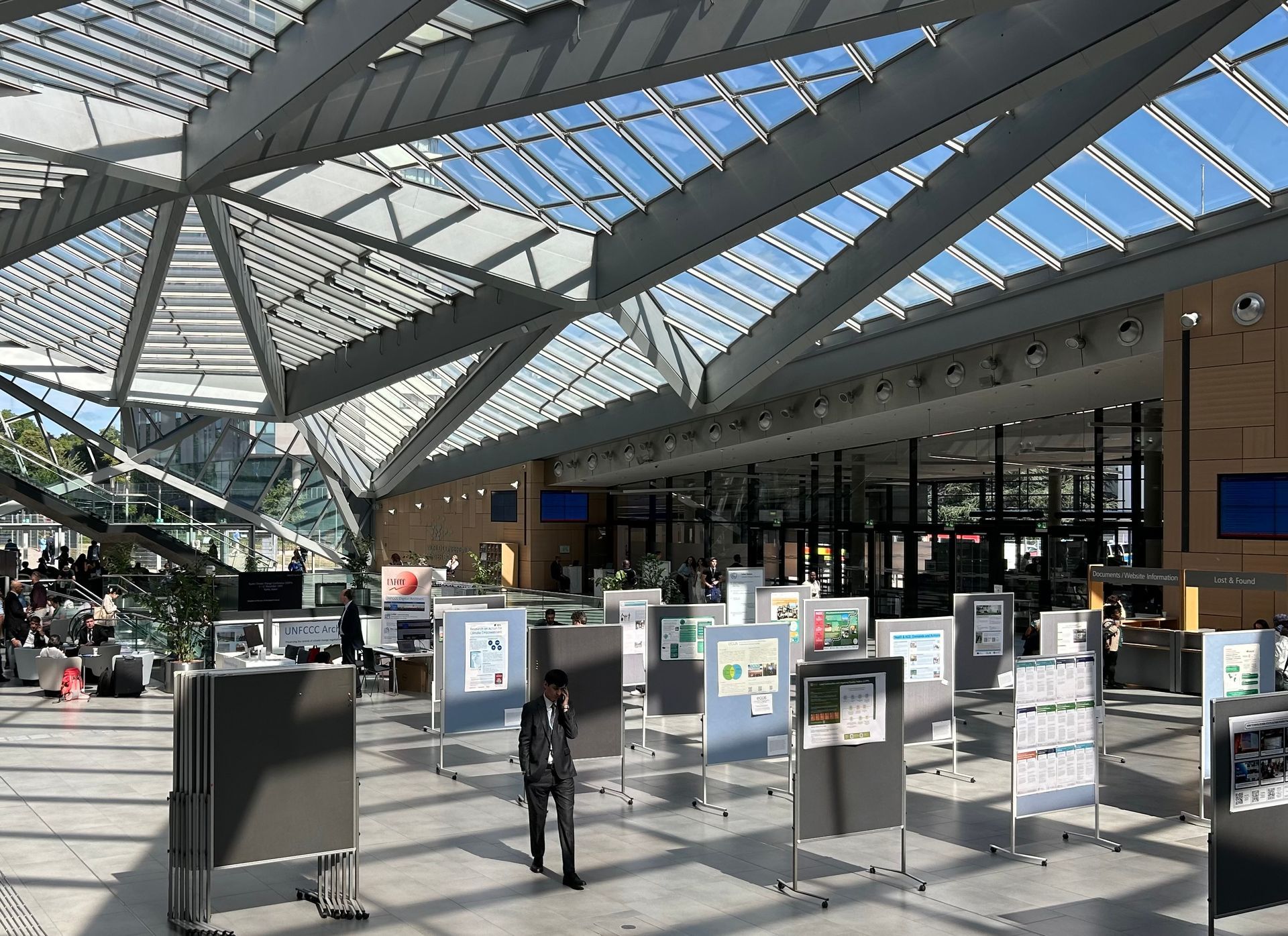Localizing the SDGs: Does the SDG Implementation Require a Reform of the Way the United Nations works? (4/4 posts)
4. Does localizing SDGs require a reform of the United Nations?
'Social distancing' between the international and local levels hampers SDG localization and achievement
Localizing the SDGs is an important subject for the UN since the launch of the Agenda 2030. Unfortunately, many UN diplomats seem to understand by 'localizing the SDGs' only the monitoring of the extend to which the SDGs are achieved on the ground. In contrast, the responsibility to care about goal achievement on the ground was delegated to the member states. A need for e.g. a (lean) management where coordination across international, national and local levels would be assured was not seen. Thus, while there was much talk at the UN Headquarters about localizing the SDGs there was never the intention to give local authorities a seat at the table where decisions are taken.
Unfortunately and to use a term from the current Corona pandemic, this 'social distancing' between the international level of the UN and the local level prevented an integrated and well coordinated implementation of the Agenda 2030 across all policy levels and countries. In addition, inter-agency cooperation within the UN and with development partners has also still a lot of potential to prove that the work of the UN as One is effective with respect to goal achievement. In return this means, when the Secretary General and the member states deplore now that SDG implementation is off track they complain about something which was caused by their own decision to simply delegate the SDG implementation to member states and to safeguard a social distancing where it doesn't help.
Talking about 'social distancing', it has to be admitted that local stakeholders also preferred to stay away from the political wrestling at the higher policy levels. Over 30,000 people from 167 countries participated at the Habitat III Conference in Quito in 2016. Only 2,000 of them were representatives of local and regional governments and among them were only a few hundred mayors.[1] Strong advocacy for the own cause looks different.
Overall, the need for a proper cooperation, enabling environment and implementation mechanism has been largely underestimated. If this doesn't change it could be that the next UN reform discussion, again, will be driven by stakeholders without a strong local linkage and commitment. Worse, the drama of the Coronavirus pandemic may be used as an umbrella to dismantle the ambitious Agenda 2030 and replace it by other priorities which may be not supportive for a sustainable development. This is not a prognosis but as advisor I am expected to always consider also the worst case.
The commitment of the UN to sustainable development is not laid down in the Charter but it is subject to negotiations
Demands for and discussion on a reform of the UN are on-going since decades and address a possible reform of the Security Council, ECOSOC, financing, development, human rights, transparency, diversity and democracy at the UN. Secretary-General António Guterres himself has made proposals to reform the United Nations for the areas of Development, Management and Peace and Security.[2] Any bigger reform is a major challenge because one cannot do it without touching vested interests of member states. Even partial reforms like a new definition of 'development' and a restructuring of the UN development pillar immediately touch interests of member states, governmental and non-governmental organisation and even of UN staff.
In 1945 the main goal of the UN was to prevent another world war. Since then the membership grew thanks to decolonization. Over the years many new mandates and agencies have been added to the organization. Stimulated by environmental problems in the 1970s a new thinking spread that our one Earth is a closed, finite system and our only home. The UN established the Brundtland Commission in 1983 to help direct the nations of the world towards the goal of sustainable development. The commission published its results in the Brundtland report "Our Common Future" in 1987. This report paved the way to the UN Conference on Environment and Development, also known as the Rio de Janeiro Earth Summit, in 1992. Local development was identified as key to goal achievement and the Local Agenda 21, as one of the concrete outcomes of the Rio Summit triggered worldwide about 6400 local agenda initiatives to mainstream sustainable development. The UN Summit in 2015 with the launch of the Agenda 2030 including the SDG marked a further widening of the scope of the UN. Now, not only the nations and their people but also the cities, the land, oceans and the climate are at the core of the UN. The world is now understood as one home or oikos (ancient Greek: οἶκος, plural: οἶκοι; English prefix: eco- for ecology and economics). Unfortunately, (household) there is no common understanding on the management and maintenance this oikos needs, and this puts the entire policy at risk.
[1] https://habitat3.org/the-conference/participants/ (accessed on 14 January 2021)
[2] https://reform.un.org/ (accessed on 13 January 2021)
Global and regional cooperation in an age of epidemic uncertainty
The accumulation of different international crisis and now the Corona pandemic triggers a new reform discussion. Many governmental and non-governmental institutions already joined the dialogue on the future of the UN. For instance, the Doha Forum is a global platform for dialogue, bringing together leaders in policy to build innovative and action driven networks. Strategic partners include Chatham House, European Council of Foreign Relations, International Crisis House and the Munich Security Conference.[1] And there is the Stimson Center in Washington D.C.. It currently implements a Just Security 2020 program that "aims to build a more capable United Nations, strengthen other global institutions to better cope with existing and emerging global challenges, and promoting multilateral approaches to international problems." The Doha Forum, in partnership with the Stimson Center’s Just Security 2020 program [2], released on 30 Nov 2020, the day before the UN Summit on the pandemic a new report: "Coping with New and Old Crises: Global and Regional Cooperation in an Age of Epidemic Uncertainty"[3]. Co-chairs of the Doha Forum are the Deputy Prime Minister of Qatar and the very Gro Harlem Brundtland who chaired in the 1980s the Brundtland Commission.
[1] https://dohaforum.org/about-us (accessed on 13 January 2021)
[2] https://www.stimson.org/project/just-security-2020/ (accessed on 13 January 2021)
[3] https://dohaforum.org/docs/default-source/default-document-library/doha-report-2020-web-version.pdf (accessed on 12 January 2021)

- Supporting public health, basic human rights, and social protection systems;
- Facilitating robust and fair economies through improved capacity development, financing for development, and resilient supply chains; and better, fairer business and life opportunities for entrepreneurs and youth;
- Fostering a green recovery through sustainable industry, decarbonisation, and a broader knowledge base for climate action;
- Strengthening digital connectivity, infrastructure, and public awareness-raisin.
Whatever the underlying motivation, it should be noted that there is a new discussion about the UN, its governance and policies, and it may take an unexpected turn. But even independent of the Doha Forum there are reasons enough to discuss the situation of the Agenda 2030 and localization of SDGs and to prove that
- The Agenda 2030 can be put back on track and
- The way the UN operates can be made more effective and efficient by strengthening coordination and participatory elements.
Suggestions for better localizing the SDG and the UN
Member states and UN Secretary General acknowledged even before the Corona pandemic that the Agenda 2030 with the localization and achievement of SDGs is off track. From here it is not too far a way to either dismantle the Agenda completely or to weaken its ambitions e.g. in the name of a COVID-19 recovery programme. Alternatively, the upcoming discussion and transition phase can and should be used to improve the Agenda 2030 by localizing the UN!
What does localizing the UN mean? A world government and world bureaucracy with a kind of a State Planning Committee at the level of the UN that micromanages the world down to the local level? No. I don't have a final definition yet and use the term here as a programmatic expression. Certainly, what is needed is a better and more effective coordination between the UN at the international level and the world below that level. The UN needs to be better informed by the local situation, challenges and opportunities. The most people are at the local level. They are not just the object of UN acitivities. Instead, they should be treated as the sovereign (recall the beginning of the UN Charter: 'We the peoples...'; see also blog post 1). The UN would benefit from going local and providing local authorities a seat at the table where decisions are taken (see blog post 3).
The following suggestions are work in progress for the reader's consideration. The guiding question for their formulation was what can be done within the current UN system to improve localizing the Agenda 2030 and the SDG implementation by improving the work and stakeholder cooperation of the UN itself.
Suggestion 1 Experience: Practice, practice, practice localization of the SDGs
Practice, practice, practice SDG implementation because all experience of practical efforts to implement and achieve goals tell us best what works, what does not and why. Which enabling environment, implementation mechanism, tools and approaches are most effective and what capacities are available or have to be build up? Special emphasis should be put on anything which goes beyond the comfort zone of normal work. This includes initiatives that jointly address several SDGs and targets (e.g. Nexus projects) in a participative, integrative, cross sector, cross border and multilevel manner with diverse sets of stakeholders. Stakeholder should also learn from peer-to-peer exchange and from applying guidance documents, tools, methodologies and data as provided by local, national and international organizations including UN Statistical Committee, UN-Habitat, UNDP, UNECE, ESCAP, World Bank, Cities Alliance, OSCE, UCLG, ICLEI etc.
Suggestion 2 Past experience: Get informed and inspired by past experience including Local Agenda 21
In addition, through an ex-post evaluation or research it would be useful to gain a better understanding about the 6400 Local Agenda 21 initiatives launched during the Rio Process after 1992. What can we learn from their different forms, approaches, performance, failures and achievements? The outcomes could help to identify good and bad practices which could further support current activities to get the Agenda 2030 on track again.
Suggestion 3 Capacity development: Build on growing experience of the Corona pandemic
From own work experience I know that many institutions adapt and amend their on-going programmes and projects in response to the Corona pandemic. In doing so, local authorities around the world are learning how much development and prosperity in their own municipality and territory depends on global cooperation to fight the Corona pandemic. From this understanding of interdependencies to a general intensification of networking and cooperation it is just one step.
Suggestions 4 Advocacy: Boost cooperation and stakeholder networks
Unfortunately, at the level of the UN there is no representative body for all local and other subnational authorities. With the UN as an international organization where member states are represented through their national governments it is likely that dialogue about localizing the SDGs will remain limited and advocacy by local authorities for the needs of local implementation will remain a challenge. In this situation it is even more important that local authorities, professionals etc engage in networks including UCLG, Metropolis, ICLEI, ISOCARP, AESOP etc and support their work as indicated in blog post 2.
Suggestion 5 Advocacy: Don't rely on appeals and underscore the risks and costs of missing the SDG
The document libraries of UN agencies, governmental and non-governmental organizations are full of recommendations like these: Get inspired by these collections of practice examples, these tool boxes, reports and guidelines. That's good! However, if there should be at any time in future an effort to dismantle the Agenda 2030 the appellative type of argumentation may not be sufficient. Instead, it might need a fact-based argumentation why the implementation of the SDG is needed and what would be the cost for the societies if goals won't be achieved. There have been some good efforts in this direction in 2020. For instance, the UN Economist Network for the UN 75th Anniversary presented in September 2020 its report "Shaping the Trends of Our Time".[1] Its main chapters include one on urbanization. That's progress but more would be needed to prove that a dismantling of the Agenda 2030 from its ambitions would be (financially or otherwise) too costly.
Suggestion 6 Policy coherence: Integrate agendas and strategies at the UN and national levels
The integration and coordination of agendas and strategies is indispensable. Without it policy coherence cannot be assured. Either it is possible to integrate development agendas at the level of international organizations or, if that is not possible, it cannot be expected that parallel agendas are implemented by local stakeholders. The integration of agendas will need both, research and, again, practice, practice, practice.
For the authors of the above-mentioned report "Shaping the Trends of Our Time" it is clear that the UN must play a central role in helping to guide the mega-trends in line with the commitments made in the 2030 Agenda. That requires coordination and integration. Prepared by UN-Habitat the main chapter on urbanization (pp 71-101) discusses trends, patterns and drivers of urbanization. Its recommendations (p 92) highlight national urban policies (NUP) and national development planning (NDP) as providers of a framework for guiding the social, environmental and economic opportunities of sustainable urbanization. With this main chapter the entire UN report underscores the potential of NUP and integrated and participators urban and territorial planning in response to global mega-trends and in achieving the Agenda 2030. It will be necessary to continue the path of coordinating national development planning with national urban and other national spatial policies. In a similar way it will be necessary to better coordinate agenda development at the level of the UN.
Suggestion 7 Management: Prevent bureaucracy through smart interface management
Nothing in my four blog posts on localizing the SDGs is intended to support the idea of a world bureaucracy or any other control system which micromanages all activities in the world. That would be a horror. Instead, I would favour a form of a loose coupling between existing institutions on all policy levels and in all relevant policy sectors. Of course, to be effective and efficient and prevent a new super bureaucracy it requires a smart interface management between policy levels, sectors of policy and stakeholder groups.
[1] https://www.un.org/development/desa/publications/report-of-the-un-economist-network-for-the-un-75th-anniversary-shaping-the-trends-of-our-time.html
------
Note on this series of four blog posts
Localizing the SDGs: Does the SDG Implementation Require a Reform of the Way the United Nations works?
Post 1: The UN in 2015 prepared the SDG but no appropriate enabling environment and implementation mechanism
Post 2: First efforts to localize the SDG between 2015 and 2020
Post 3: Local actors call for a seat at the table of international decision-makers to improve SDG implementation
Post 4: Does localizing SDG require a reform of the United Nations?
To read all posts of the new blog 'With burning patience' please follow this link
https://www.ugraute.de/blog-1
Policies and Governance for Resilient and Sustainable Cities and Regions









